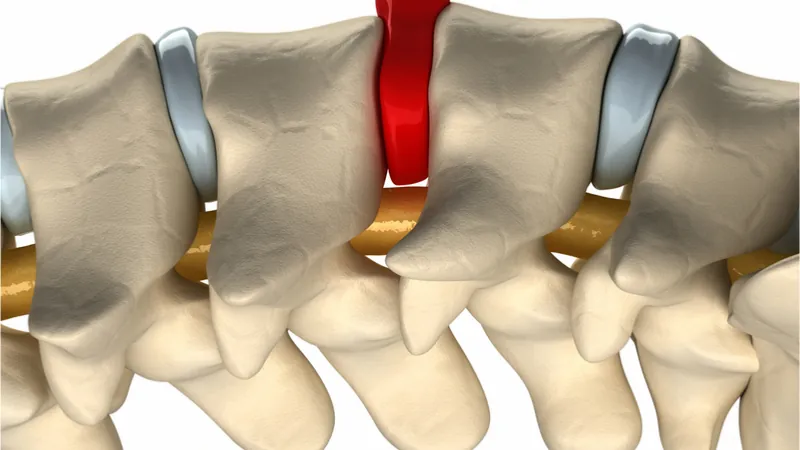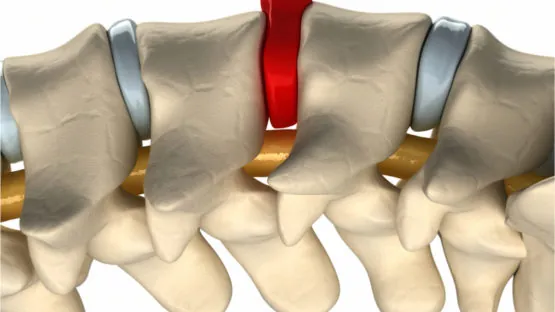Recent research out of Frontiers in Pharmacology has shown that a natural herbal compound reduces senescence and intervertebral disc degeneration in mice.

Read More
Cellular senescence in intervertebral disc degeneration
Located between our vertebral bones, intervertebral discs are the shock-absorbing tissues that allow the spine to bend. Like all tissues in the body, they degrade with age. In many people, this progressive degradation negatively impacts their quality of life, contributing to such things as back pain, degenerative disc disease, and herniated discs. It’s been long established that inflammation contributes to an unbalanced extracellular matrix (ECM) homeostasis. When new ECM is being laid down more slowly than old ECM is being degraded, the result is disc degeneration. In recent years, senescent cells have been implicated in this process.
In particular, the nucleus pulposus (NP), a gel-like region in the center of intervertebral discs, and the cells that reside there play a critical role in ECM remodeling. Senescent NP cells contribute to local inflammation, which, in turn, causes an ECM imbalance. Hypothesizing that the inflammatory SASP is largely to blame for disc degeneration, researchers at Shanghai Jiaotong University School of Medicine investigated the therapeutic abilities of dehydrocostus lactone (DHE) [1].
DHE can alter cellular senescence in vitro
DHE is a natural compound with known anti-inflammatory effects. It has been used in other studies targeting age-related diseases, including the lung and bone. However, it had not previously been studied in the cell types of the intervertebral disc. NP cells were used in vitro to investigate the cytotoxicity and senotherapeutic effects of DHE. While the highest concentrations tested did have cytotoxic effects, the lower doses did show marked benefits. NP cells exposed to the inflammatory cytokine TNF-a increased their ECM dysregulation and markers of senescence, such as SA ß-Gal, p21, and p53. When treated with DHE, each of these measures were improved, although they were not rescued completely to baseline. Deeper exploration suggested that the NF-?B, MAPK, and dsDNA-STING pathways were responsible for the therapeutic benefits seen with DHE treatment.
DHE reduced disc degeneration in mice
DHE also proved to be beneficial in a mouse model of spinal instability. DHE-treated mice had better spinal structure as scored using both X-ray and H&E staining. Inflammation was reduced (as measured via TNF-a and IL-1ß), and ECM dysregulation was improved (as measured via aggrecan). However, the researchers did not investigate the drug’s effects on senescence in vivo.
Considered together, the results of this study show that DHE can ameliorate the senescence of NP cells via reduced STING signaling activation and by alleviating inflammatory factors through inhibition of NF-?B and MAPK pathways. Moreover, our in vivo data show the protective function of DHE in the progression of IDD. Notably, clinically available drugs containing DHE, such as compound ancklandia and berberine tablets, have been used for their anti-inflammatory actions to treat digestive tract diseases. Therefore, DHE may be considered safe and reliable for clinical use. On the basis of the beneficial effects of DHE on IDD observed in this study both in vivo and in vitro—including reductions of inflammation, ECM catabolism, and cellular senescence—DHE may be considered as a treatment for IDD, either by oral administration or as a local IVD injection.
Conclusion
As the field advances, more drugs that can modify, prevent, or eliminate senescent cells are being discovered. This study provides an interesting, early look at DHE, but it leaves much unanswered. The researchers primarily focused on its anti-inflammatory properties while only briefly touching on senescence. It is not clear whether DHE indirectly reduced senescence by reducing inflammation or if it is having an impact directly on senescence.
As a longevity drug, DHE will also require more investigation. The results of this study were promising, but the animal model was of acute injury. What results it may have on more chronic conditions and how it influences other hallmarks of aging beyond inflammation and senescence will say a lot about its potential to extend healthy lifespan.
Literature
[1] Chen, Z., Yan, X., Zhou, Y., Liang, Z., Chen, C., … & Zhao, J. (2021). Dehydrocostus Lactone Attenuates the Senescence of Nucleus Pulposus Cells and Ameliorates Intervertebral Disc Degeneration via Inhibition of STING-TBK1/NF-?B and MAPK Signaling. Frontiers in Pharmacology, 12:641098. 10.3389/fphar.2021.641098



